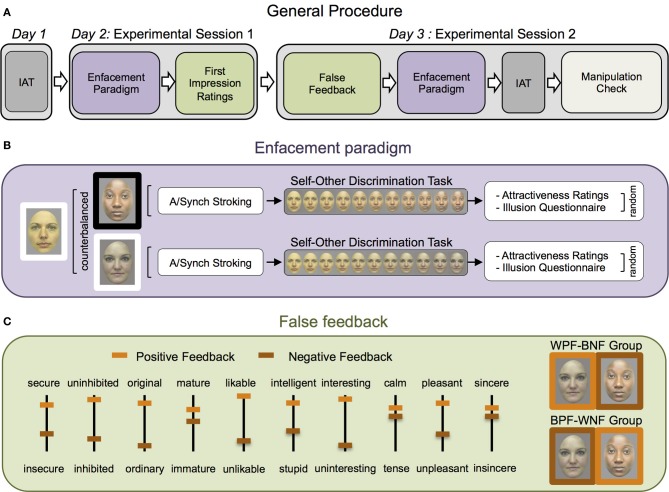Figure 1.
Experimental procedure. (A) Illustration of the general procedure, which was completed in three different sessions separated by about a week's time. Participants performed a preliminary session (where their face pictures, IAT, and personality measures were taken) and two experimental sessions during which the enfacement was induced with a black and a white confederate before and after the interpersonal perception was manipulated. (B) The enfacement paradigm included synchronous (illusory condition) and asynchronous (control condition) stroking of one's own and a black or white partner's face, each followed by: (i) the self-other discrimination task (rating on a 0–100 VAS how much each of the 50 images extracted from the morphing continuum between the self and other face was like their own face, with 0 = “not me at all”; 100 = “completely me”); and in random order: (ii) the attractiveness rating; and (iii) the Illusion questionnaire. (C) To vary the interpersonal perception in the second session, false-feedback about the first impression of both the black and the white partner was given to the participants. Depicted are the globally positive (orange) and negative feedback (brown) on the ten bipolar adjectives-VAS ratings. One group of participants received positive feedback from the white (WPF) and negative feedback from the black (BNF) partner, the other group the opposite.

